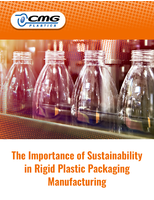Liquid Abatement System produces concentrated metal waste.
Press Release Summary:
EPMA(TM) (electroplated metals abatement system) processes metal laden waste streams from both CMP and multiple plating operations. Combining fluidized bed ion exchange system and multiple stage nano-filtration unit, system reduces waste volumes by 1,000 to 1 or more and metals in the concentrated waste exceed 20,000 ppm.
Original Press Release:
BOC Edwards Announces New Liquid Abatement System for Metal Electroplating Waste
Integrated system provides simplified treatment and 1000-fold concentration of metals from multiple waste streams.
SAN FRANCISCO, CALIF. (10 July 2006)- BOC Edwards, a leading supplier of vacuum and abatement equipment to the world's 300 mm semiconductor fabs, announced today the release of its new EPMA(TM) (electroplated metals abatement system) product, which offers simplified liquid waste treatment and lower cost of ownership than conventional approaches. The first system has been installed and is operational in a major US electronics manufacturing facility where it processes metal laden waste streams from both CMP and multiple plating operations in a single integrated process.
"EPMA greatly simplifies the task of managing waste from electrochemical deposition processes," said Phil Chandler, general manager liquid abatement, BOC Edwards. "An EPMA system treats multiple waste streams from CMP and plating operations. EPMA generates an easy-to-handle, highly concentrated liquid waste-unlike traditional methods that involve either transporting large volumes of material for off-site processing or managing multiple precipitation based processes, and the solid waste that they create."
Metallization steps for semiconductor, MRAM, disk platen, and disk head manufacturing produce large volumes of dilute waste with relatively low concentrations of metals including copper, nickel, cobalt and iron. These wastes are produced by post-plating rinse and by planarization steps. Most of the metals are regulated and must be removed before the liquid waste can be discharged. However, the large volumes and dilute concentrations make traditional treatment methods such as precipitation, economically less viable.
The EPMA system removes metals from both CMP and plating rinse streams, discharging a final effluent with very low metals concentrations, and producing a highly concentrated metal bearing waste. The system combines a novel fluidized bed ion exchange system and a multiple stage nano-filtration unit, such that waste volumes are reduced by factors of 1,000 to 1 or more, and metals in the concentrated waste exceed 20,000 ppm.
Background
BOC Edwards, part of The BOC Group plc, is a leading supplier of integrated solutions for the manufacture of microelectronics devices, including semiconductors and flat panel displays. Partnering with fabs, foundries and process tool manufacturers, BOC Edwards provides electronic materials and process-enabling subsystems that are supported by best-in-class operations and maintenance services for its global customer base.
Serving two million customers in more than 50 countries, The BOC Group is one of the largest and most global of the world's leading gases companies. It employs over 30,000 people, with total revenues of £4.6 billion (more than US $8 billion) in 2005. For more than a century, BOC has contributed to advances in many industries and aspects of everyday life, including steel-making, refining, chemical processing, environmental protection, wastewater treatment, welding and cutting, food processing and distribution, glass production, electronics and health care.
Information on the BOC Group can be accessed by visiting the Group web site, www.boc.com. Specific information on BOC Edwards can be found at www.bocedwards.com. E-mail inquires can be sent to info@bocedwards.com.




